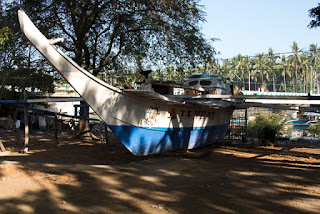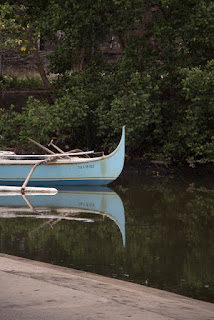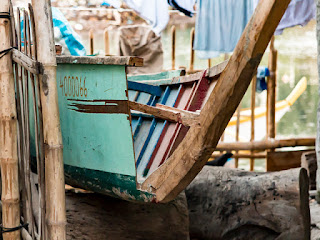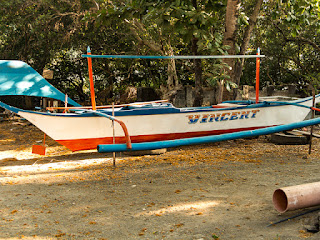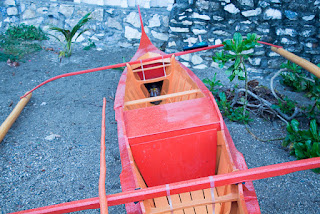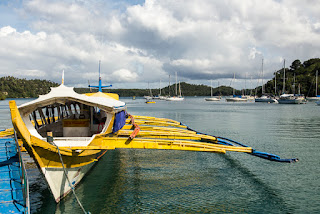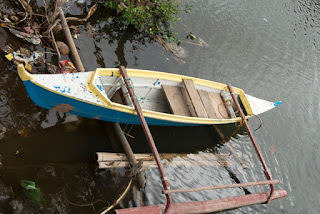| The five booms on this large passenger bangka are complex structures. Amidships, each appears to be an open-topped, box-section girder from which a tapered, rectangular-section beam protrudes outboard with a slight downward slope. Lashed on top of these are several bamboo poles, lashed together and extending further outboard. One pole in this bundle extends even further outboard and curves downward to contact the float, which is itself a few bamboo poles of small diameter, providing probably only modest buoyancy. In the main, the booms appear to be quite rigid, although the lightness of the final outboard section may impart some flexibility. |

